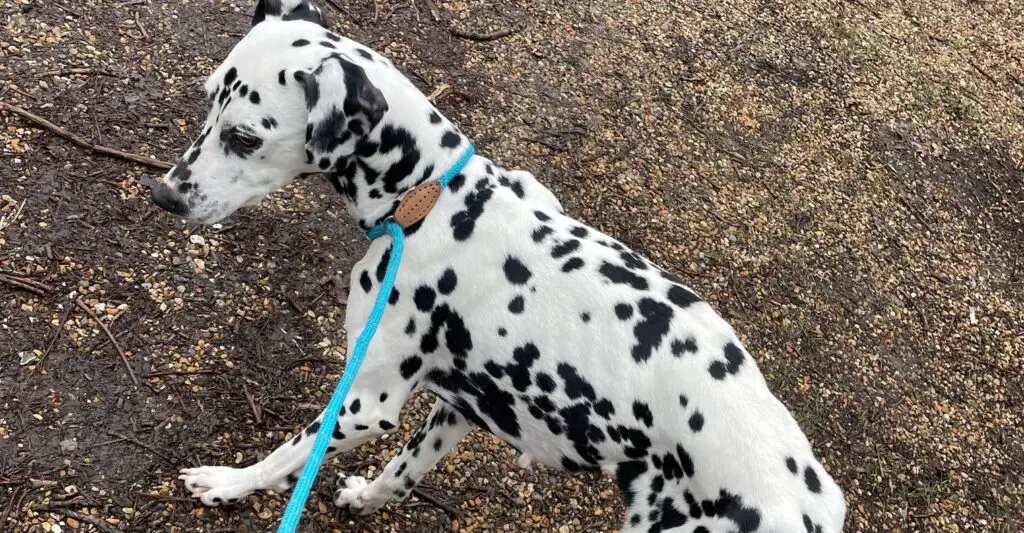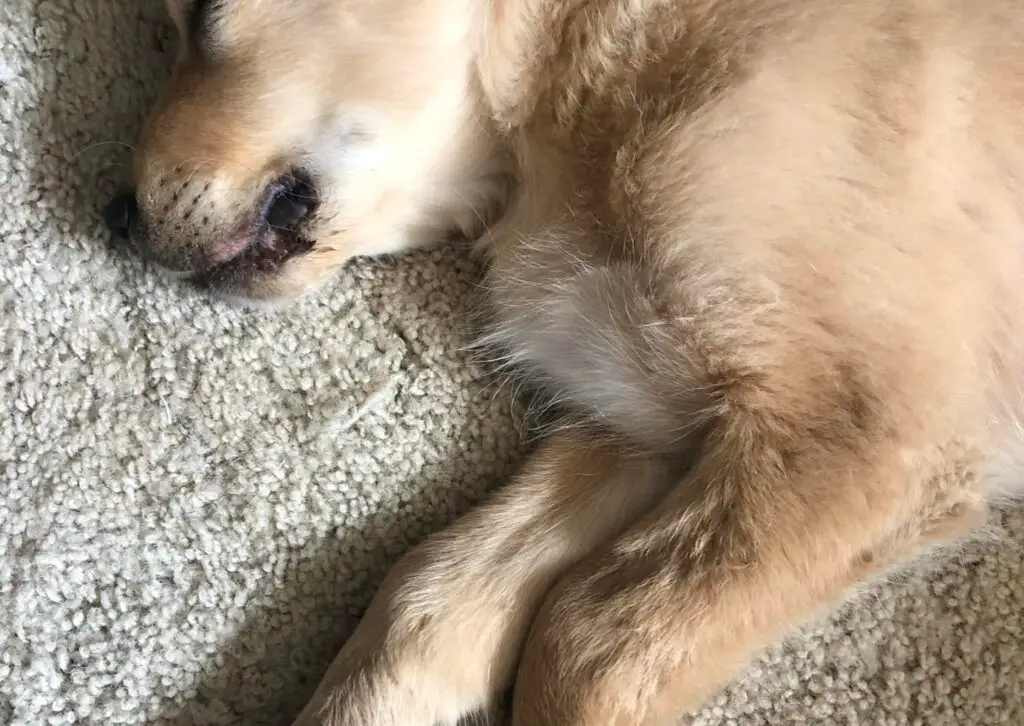In this insightful piece, we delve into the fascinating world of canine anatomy, focusing on the lymphatic system.
We’ll specifically explore the often-overlooked area of your dog’s ‘armpits’, known as the axillary region.
By understanding the presence and function of lymph nodes in this area, you will be better equipped to monitor your pet’s health and detect any potential issues early on.
So, buckle up for an informative journey that combines science, health, and our beloved four-legged friends.
- Key Takeaway
- Do Dogs Have Lymph Nodes In Their Armpits?
- How To Check a Dog’s Axillary Lymph Nodes?
- How Do Swollen Dog’s Axillary Lymph Nodes Feel Like?
- Symptoms of Swollen Axillary Lymph Nodes In Dogs
- Causes of Swollen Axillary Lymph Nodes In Dogs
- Treatment For Axillary Lymph Nodes In Dogs
- Recovery From Axillary Lymph Nodes In Dogs
- FAQs
- Q: What are swollen lymph nodes?
- Q: What are the symptoms of swollen lymph nodes in dogs?
- Q: Where are the lymph nodes located in dogs?
- Q: What are the potential causes of swollen lymph nodes in dogs?
- Q: How are swollen lymph nodes in dogs diagnosed?
- Q: What are the treatment options for swollen lymph nodes in dogs?
- Q: Can swollen lymph nodes in dogs be a sign of lymphoma?
- Q: When should I consult a veterinarian about swollen lymph nodes in my dog?
- Q: Are there any home remedies or treatments I can try for swollen lymph nodes in my dog?
- In Conclusion
Key Takeaway
- Dogs do have lymph nodes in their armpits, also known as axillary lymph nodes. These nodes are located on either side of the armpit area, just below where the front leg connects with the body.
- Swollen axillary lymph nodes in dogs typically feel like firm, round bumps under the skin in the armpit area, and they may vary in size from a small pea to a large grape.
- Swollen axillary lymph nodes in dogs can be caused by various factors including bacterial, viral, and fungal infections, or parasites, inflammation, cancer, and conditions like demodectic mange, juvenile cellulitis, and tick-borne diseases such as Lyme disease.
Do Dogs Have Lymph Nodes In Their Armpits?

Yes, dogs do indeed have lymph nodes in their armpits, also known as the axillary region. These lymph nodes, called axillary lymph nodes, are located on either side of your dog’s armpits and play a crucial role in the immune system.
They help filter harmful substances and fight off infections.
However, these lymph nodes can become enlarged or swollen due to various health conditions such as infections, inflammation, or cancer.
If you notice any unusual swelling or lumps in this area, it is essential to consult with a veterinarian for an accurate diagnosis and appropriate treatment.
The number of axillary lymph nodes can vary. In most cases, there is usually one axillary lymph node, but in some cases, there may be two.
How To Check a Dog’s Axillary Lymph Nodes?

- Identify the Location of the Axillary Lymph Nodes
- Position Your Dog Correctly
- Use Gentle Pressure
- Compare Both Sides
- Look for Other Symptoms
- Consult a Veterinarian
Identify the Location of the Axillary Lymph Nodes
The axillary lymph nodes in dogs are located in the armpit area, just below where the front leg connects with the body.
Position Your Dog Correctly
Ensure your dog is standing or lying down comfortably. You might need someone’s help to keep them still.
Use Gentle Pressure
Using your fingertips, apply gentle pressure on the armpit area. Feel for any swelling or lumps.
Compare Both Sides
Check both sides for consistency. Any significant difference could indicate a problem.
Look for Other Symptoms
Be aware of other symptoms like loss of appetite, lethargy, or unusual behavior that might indicate an illness.
Consult a Veterinarian
If you notice any abnormalities, consult with a veterinarian immediately. Always remember, early detection is key in dealing with potential health issues.
How Do Swollen Dog’s Axillary Lymph Nodes Feel Like?
Swollen axillary lymph nodes in dogs typically feel enlarged and firmer than normal. They can feel like a firm, rubbery lump that moves freely beneath the skin.
The nodes may feel spongy or hard like a marble. These swellings are usually not painful for the dog.
However, the size and texture of the lymph nodes can vary depending on the underlying cause of the swelling.
Symptoms of Swollen Axillary Lymph Nodes In Dogs
- Enlargement of the lymph nodes in the armpit area that can be felt as a lump or swelling
- Loss of appetite or sudden weight loss
- Lethargy or decreased activity levels
- Fever or unexplained increase in body temperature
- Skin redness or inflammation around the armpit area
- Difficulty moving or lameness, especially if the swelling is causing discomfort
- Changes in behavior such as increased irritability or depression
- Excessive scratching or licking of the armpit area
- Unusual lumps elsewhere on the body, as other lymph nodes may also be affected
- Difficulty breathing (in severe cases)
Causes of Swollen Axillary Lymph Nodes In Dogs
- Infections: Bacterial, viral, or fungal infections can cause the lymph nodes to swell as the body tries to fight off these invaders.
- Allergies: Reactions to environmental factors, food, or substances can lead to inflammation and swelling of the lymph nodes.
- Parasites: Fleas, ticks, or internal parasites can cause an immune response leading to swollen lymph nodes.
- Autoimmune Diseases: Conditions, where the dog’s immune system attacks its own cells, can lead to inflammation and swelling of the lymph nodes.
- Cancer: Lymphoma or other types of cancer can cause the lymph nodes to enlarge. This is often the most concerning cause of swollen lymph nodes.
- Injury: Trauma to the area near a lymph node can result in swelling and inflammation.
- Certain Medications: Some drugs can cause lymph nodes to swell as a side effect.
Treatment For Axillary Lymph Nodes In Dogs
Treatment for swollen axillary lymph nodes in dogs typically depends on the underlying cause of the swelling:
- Infections: If the swollen lymph nodes are due to bacterial or fungal infections, your vet may prescribe antibiotics or antifungal medications to treat the infection.
- Allergies or Autoimmune Diseases: In cases where allergies or autoimmune diseases are causing the swelling, your vet may recommend anti-inflammatory drugs or disease-modifying antirheumatic drugs (DMARDs).
- Cancer: If the lymph node swelling is caused by cancer such as lymphoma, treatment options can include chemotherapy, radiation therapy, and sometimes surgery. Some dog parents may choose to treat with prednisone, while others may opt for chemotherapy under the guidance of a veterinary oncologist.
- Supportive Care: In addition to treating the underlying cause, supportive care to manage symptoms and improve your dog’s quality of life may also be necessary. This can include pain management, nutritional support, and other palliative care measures.
Recovery From Axillary Lymph Nodes In Dogs
In cases where lymph node resection, or removal, is performed, most dogs will be fully healed within four weeks, although this period may be longer for older animals.
However, right after surgery, dogs might feel weak, and the shoulder area can be sore and stiff for a few days, making it hard to move.
The side effects of lymph node removal in dogs can include surgery-induced bleeding, infection, and organ or tissue injury.
A condition called lymphocele can also occur, where lymphatic fluids collect and need to be removed.
FAQs
Q: What are swollen lymph nodes?
A: Swollen lymph nodes, also known as lymphadenopathy, refer to the enlargement of lymph nodes due to various causes.
Q: What are the symptoms of swollen lymph nodes in dogs?
A: The symptoms of swollen lymph nodes in dogs may include lumps or bumps under the skin, pain or discomfort, fever, lethargy, loss of appetite, and weight loss.
Q: Where are the lymph nodes located in dogs?
A: Dogs have lymph nodes located in various parts of their body, including the armpits, neck, groin, and behind the knees.
Q: What are the potential causes of swollen lymph nodes in dogs?
A: There are several potential causes of swollen lymph nodes in dogs, including infection, inflammation, immune system disorders, cancer (such as lymphoma), and certain medications.
Q: How are swollen lymph nodes in dogs diagnosed?
A: To diagnose swollen lymph nodes in dogs, a veterinarian may perform a physical examination, feeling for enlarged lymph nodes, and may recommend further tests, such as bloodwork, fine needle aspirate, or biopsy.
Q: What are the treatment options for swollen lymph nodes in dogs?
A: The treatment options for swollen lymph nodes in dogs depend on the underlying cause. It may include antibiotics for infections, anti-inflammatory medications, chemotherapy for cancer, or other specific treatments based on the diagnosis.
Q: Can swollen lymph nodes in dogs be a sign of lymphoma?
A: Yes, swollen lymph nodes in dogs can sometimes be a sign of lymphoma, which is a type of cancer that affects the lymphatic system.
Q: When should I consult a veterinarian about swollen lymph nodes in my dog?
A: It is recommended to consult a veterinarian if you notice any abnormal or persistent swelling of your dog’s lymph nodes, as it could indicate an underlying health issue.
Q: Are there any home remedies or treatments I can try for swollen lymph nodes in my dog?
A: It is always best to consult with a veterinarian for proper diagnosis and treatment of swollen lymph nodes in dogs. Home remedies may not be sufficient to address the underlying cause.
In Conclusion
In conclusion, dogs do indeed have lymph nodes in their armpits, also known as the axillary region.
These nodes are a critical part of the canine immune system, helping to filter harmful substances and fight off infections.
However, like other lymph nodes in the body, they can become enlarged or swollen due to health issues such as infection, inflammation, or cancer.
Therefore, as a responsible pet owner, it’s important to be aware of your dog’s normal anatomy and monitor for any changes.




Leave a Reply